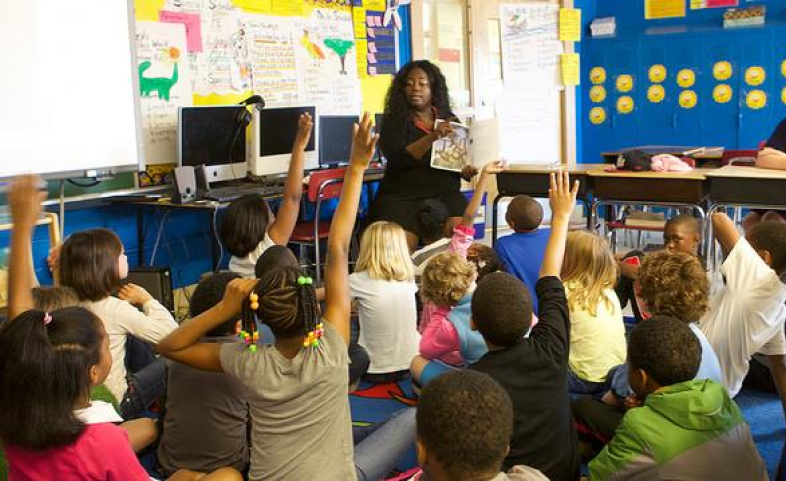
Getting High-Quality Teachers to Disadvantaged Students
How do you get the best teachers in front of the students who need them the most? It’s an issue getting increased attention, but a tough problem to solve.

How do you get the best teachers in front of the students who need them the most? It’s an issue getting increased attention, but a tough problem to solve.
How do you get the best teachers in front of the students who need them the most? It’s an issue getting increased attention, but a tough problem to solve.
An Obama administration official said he’s encouraged by state plans developed to “ensure equitable access to excellent educators,” as required in 2014 by the U.S. Department of Education.
The official, James Cole Jr., the Education Department’s acting deputy secretary, cited some examples, including from Missouri and Delaware. In Missouri, a “shortage predictor model” is being used to pinpoint future teacher shortages, he said during an Education Writers Association panel on getting high-quality teachers to disadvantaged students. In Delaware, a ‘teacher-leader pilot” helps promising educators get career development opportunities without requiring them to leave the classroom.
Cole, who also has been delegated the duties of the deputy secretary, said the federal agency is committed to making sure the plans are “meaningful” for teachers and students, but acknowledged more work is needed across the board.
“We can and we must get better about recruiting and retaining teachers and rewarding our teachers who are really doing yeoman’s work for the future of our country,” said Cole.
He was joined for the May 2 panel by analysts from the American Federation of Teachers and the Education Trust, a research and advocacy group for low-income and minority children.
Sonja Santelises, the vice president of K-12 policy and practice at the Education Trust, said her organization is working with roughly six districts to tackle the issue of getting high-quality teachers to disadvantaged students. District leaders are often surprised at the magnitude of the problem once they dig into the data, she said. (Santelises was recently named the new CEO of the Baltimore City school district.)
“Because they weren’t looking,” she said, they did not realize the situation. “They had concentrations of the highest poverty kids who were the furthest behind with the least supported teachers [and school] leaders that are least equipped to create a positive learning environment for teachers — and it’s systematic,” Santelises said.
Santelises emphasized that research shows it’s often working conditions — not the students they are serving — that lead many good teachers to leave a school. She said too often the problems associated with poverty are used as an excuse.
And, Santelises noted that teachers of color have three times the rate of departure compared to their white peers. She said the problem isn’t recruiting teachers to high-poverty schools, but keeping them.
Strategies her organization advocates include a focus on improving the conditions for teaching and learning in schools, such a strong school leadership, a campus-wide commitment to improving instruction using data and reflecting on practice, and a collaborative learning environment that values and rewards individual contributions.
Another big challenge, said Dyan Smiley from the American Federation of Teachers, is that too often teachers are “put by themselves” in high-poverty schools and then everyone later wonders “why they are out the door after a year or two.” Teachers need “the time to work together” and collaborate, Smiley said.
“You are expected to be the lone superhero,” Smiley said. “That’s disturbing.”
Your post will be on the website shortly.
We will get back to you shortly